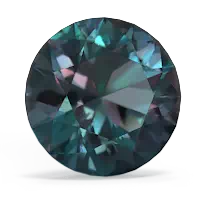


Tanzanite is the gem of fortune and luck. A tanzanite pendant is said to ease stress and free one from bad habits. Emerald is associated with Venus, the Greek goddess of love and beauty. They say an emerald pendant can protect lovers from unfaithfulness. Although a relatively new gem, alexandrite is said to bring pleasure and love. Wear a created alexandrite pendant to attract the man of your dreams.